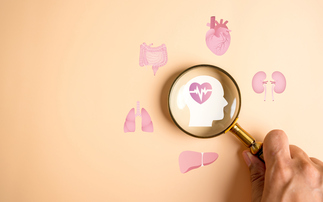Today's culture bombards us with images of unrealistic expectations of how we should all look, so what does it mean for insurers as more and more people, females in particular, are subjecting their bodies to a strategy of dietary abuse?
Anorexia nervosa and bulimia nervosa are thought of by most people as a disease of modern society, with the death of Karen Carpenter in 1983 bringing the condition into the media spotlight. However, in 1870 Sir William Gull in London and Charles Lasegue, a Parisian neurologist, published papers describing a number of cases exhibiting a pattern of self starvation that is now clearly recognisable as anorexia nervosa. The ideal feminine shape and perception of beauty has changed over the centuries, but during the Victorian era the most desirable female asset was that of a tiny waist. Social pressures developed this further so that slimness was seen as a mark of wealth and status, because overweight women were seen as old, poor and intellectually inferior.
Today, young women in particular are bombarded by media images promoting unrealistic expectations of slenderness and attractiveness which has lead to controversy over size zero celebrities and super skinny models who reinforce this image. In 2001 the National Journal of Obesity published a study entitled "Thinness and body shape of Playboy Centrefolds from 1978-1998" which found that based on current recommendations for the classification of underweight (BMI <18.5) 70% of the centrefolds were underweight, and 77% of those were less than 85% of their ideal body weight. Although it might be tempting not to take a study of glamour models too seriously, their conclusion was "Given the perception of Playboy centrefolds as culturally 'ideal' women, the notion that 70% of them are underweight highlights the social pressures on women to be thin and helps to explain the high levels of body dissatisfaction and disordered eating among women."
In industrialised Western countries dieting has become a cultural preoccupation, but anorexia nervosa and bulimia nervosa are not simply extensions of normal and socially acceptable dieting behaviour. Both are now recognised as a disease, and have been given classifications by The World Health Organisation's International Classification of Diseases (ICD-10). There are a number of eating disorders but the ICD-10 classification recognises two important syndromes:
Anorexia Nervosa - "A disorder characterized by deliberate weight loss, induced and sustained by the patient. The disorder is associated with a specific psychopathology whereby a dread of fatness and flabbiness of body contour persists as an intrusive overvalued idea, and the patients impose a low weight threshold on themselves. There is usually undernutrition of varying severity with secondary endocrine and metabolic changes and disturbances of bodily function. The symptoms include restricted dietary choice, excessive exercise, induced vomiting and purgation, and use of appetite suppressants and diuretics"
Bulimia Nervosa - "A syndrome characterized by repeated bouts of overeating and an excessive preoccupation with the control of body weight, leading to a pattern of overeating followed by vomiting or use of purgatives. This disorder shares many psychological features with anorexia nervosa, including an overconcern with body shape and weight. Repeated vomiting is likely to give rise to disturbances of body electrolytes and physical complications. There is often, but not always, a history of an earlier episode of anorexia nervosa, the interval ranging from a few months to several years."
Diagnostic criteria for anorexia nervosa in the Diagnostic and Statistical Manual of Mental Disorders IV (DSM-IV) include the following: for a definite diagnosis of anorexia nervosa body weight must be maintained at least 15% below the level expected, the weight loss is self-induced, there is body image distortion and widespread endocrine disorder. For a definite diagnosis of bulimia nervosa there must be persistent preoccupation and craving for food, frequent attempts to counteract the fattening effects of food and a morbid fear of being fat.
Both conditions occur most commonly in adolescent girls and young women, but adolescent boys and young men may also be affected, as may children approaching puberty and older women up to the menopause.
According to Mind (National Association for Mental Health) in the UK, 1% of women aged between 15 and 30 suffer from anorexia nervosa. Reports show girls as young as five years of age have weight concerns, and think about going on a diet. Approximately 1-2% of women suffer from bulimia nervosa.
These figures are substantiated by a number of organisations including the Royal College of Physicians and B-eat: (Beat Eating Disorders) who state 1% of 16-18 year olds have anorexia nervosa, 1-2% of young women are thought to be anorexic at any one time, and 1-3% of women bulimic. Unlike anorexia, cases of bulimia are rarely seen in children under the age of 13.
The prevalence of eating disorders is increasing. One reason for this could be the emergence of "pro-ana" (pro anorexia) and "pro-mia" (pro bulimia) websites, where sufferers can share dieting and purging "tips" and encourage and support each other through "thinspiration" in the pursuit of emaciation. Sufferers no longer feel isolated, and the pro-ana and pro-mia websites promote self starvation as a lifestyle choice rather than a disease.
UK Parliament Publications show that hospital admissions for anorexia have steadily risen from 419 in 1996 to 620 in 2006 and The Royal College of Psychiatrists state that 40% of people with anorexia nervosa never recover completely, but most worryingly according to the Clinical Knowledge Summaries Service 5% of anorexia cases will be fatal.
The risks of being overweight are well documented and have been covered in previous Disease of the Month articles, but there are risks associated with being underweight as well. Many studies conclude that being underweight carries risks associated with malnutrition, osteoporosis, increased vulnerability to infections, infertility and a higher overall mortality rate from all causes.
In spite of its high mortality, morbidity and chronicity, there are few studies on the subject of intervention and treatment of eating disorders. NICE, The National Institute for Health and Clinical Excellence is the independent organisation responsible for providing national guidance to the NHS on the promotion of good health and the prevention and treatment of ill health. There is no recommendation for pharmacological treatment for eating disorders, and there is little evidence to support pharmacological treatment for the associated depression in anorexia nervosa, although there has been limited success in using anti-depressants in bulimia nervosa.
Anti depressants can have cardiac side effects and many people with anorexia nervosa already have compromised cardiovascular systems which would be further damaged by these treatments especially antipsychotics and tricyclic antidepressants. The treatment recommended is psychological with an emphasis on cognitive behavioural therapy, but it is recognised that sufferers are ambivalent about treatment and will go to great lengths to hide their eating habits and lack of compliance with therapy.
Underwriting Considerations
There are multiple health dangers with eating disorders and morbidity as well as mortality is high. Malnutrition subsequent to self-starvation leads to protein deficiency and disruption of multiple organ systems. Some of the complications are hypoglycaemia, vitamin deficiencies, thyroid function suppression, neuroendocrine disturbances (delayed puberty, amenorrhea, infertility), hypothermia, cardiovascular effects (mitral valve prolapse, dysrhythmias, abnormally slow pulse, low blood pressure, heart failure), renal disturbances, constipation, and gastric dilation and rupture when binge eating. Patients who induce vomiting develop dental enamel erosion, and throat and mouth injury and inflammation. In up to 50% of sufferers there is associated depression and mood disorders, and suicide accounts for more deaths than the effects of malnutrition. Suicide rates are especially high during treatment when the patient feels they have lost control of their previously rigid and ritualistic eating behaviours and of course the control over their weight.7
If a history of anorexia nervosa or bulimia nervosa is disclosed, the following will need to be established
• Diagnosis
• Any other psychiatric diagnosis, suicide attempts or suicidal thoughts and current mental health
• Current and previous BMI readings
• Details of any physical complications
An application from someone who is still severely underweight (BMI of 18 or less) will usually be declined. Terms will not usually be quoted for life or critical illness cover until normal weight has been maintained for two years and there are no other psychiatric or physical health problems. For IP the postponement period will be longer.
There are many causes of weight loss apart from eating disorders, so if an applicant has a BMI of 18 or less a GPR or medical exam may be requested to establish the reason. Even is there is no underlying cause a small rating may be imposed due to the complications of being underweight.
Sources
National Journal of Obesity
New England Journal of Medicine
www.nice.org.uk
www.mind.org.uk
www.b-eat.co.uk
www.rcpsych.ac.uk
emedicine
Underwriting considerations and ratings: Pacific Life Re, RGA,
Emmett, S W, (1985). Theory and Treatment of Anorexia Nervosa and Bulimia Psychology Press
Katzmarzyk, P T, & Davis, C, (2001). Thinness and body shape of Playboy centerfolds from 1978 to 1998 International Journal of Obesity April 25 (4) 590-592
International statistical classification of diseases and related health problems (ICD-10 F50.0 & F50.2), 10th rev. Geneva, World Health Organization, 1992.
Troiano, R P et al, (1996). The relationship between body weight and mortality: a quantitative analysis of combined information from existing studies. International Journal of Obesity and Related Metabolic Disorders. Jan 20 (1) 63-75
Weitoft, G R (2008), Underweight, overweight and obesity as risk factors for mortality and hospitalization Scandinavian Journal of Public Health 36 (2) 169-17
Calle, E E et al, (1999) Body-Mass Index and Mortality in a Prospective Cohort of U.S. Adults New England Journal of Medicine October 341 (15) 1097-1105
Cushing, T (2008). Anorexia Nervosa emedicine.medscape.com/article/805152










